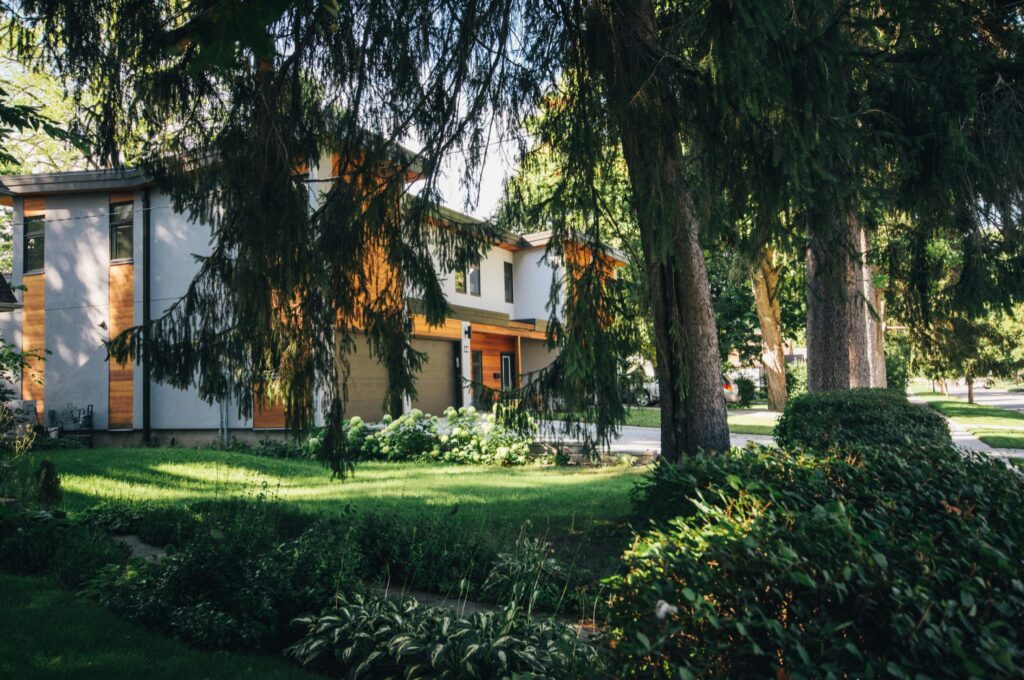
Choosing the Right Tree for Your Kansas City Property
Whether you want shade, fall color or interest during the bleak winter months, there are trees to fit your landscape needs. A local arborist can help you choose the right tree and then handle work-intensive planting to get it off the ground.
Oak trees (Quercus species) grow tall and stately, though it takes 30 years to mature, the Extension says. More impatient residents may want to consider red oak, which grows faster and offers a russet-to-bright-red display.
Shade
A great addition to any yard is a shade tree. A large shade tree can help block out the sun in summer and add color to a landscape in fall. The ginkgo and maple are two of the best shade trees for the Kansas City area, recommended by the local Kansas City tree company. The pecan is another excellent choice, as it is adaptable to various soil types and tolerant of urban conditions. Pecans are also an attractive landscape tree, with yellow catkins and edible nuts.
The Missouri state tree, dogwood, can provide a pop of blooming spring color or beautiful fall foliage. Make sure to consider the mature size of a tree before planting it; a tall tree will eventually shade an area you may want to remain sunny. When seeking advice on tree selection and care, consulting with a reputable Kansas City tree company can ensure your landscaping thrives.
Flowers
The best trees bring beauty to the landscape year-round. Many have a special impact in spring with their showy flowers or add interest in fall with spectacular color.
Regional natives like eastern redbud, serviceberry and pagoda dogwood are good choices for Kansas City gardens because they support the local insect, bird and wildlife population. Bees love the flowers on these small shade trees and birds enjoy the berries.
Whitman at Multistudio leans heavily toward natives in his designs but won’t rule out a non-native option if it fits a landscape. Other considerations are timing, color and style. Timing can be especially important for flowering trees because they bloom in early spring to complement tulips and daffodils and fill gaps in the landscape.
Fruit
Many people want to plant trees that will produce edible fruit, but you have to do your research. Look at a variety of resources, including those from the Missouri Department of Conservation.
Consider soil conditions. Many tree species require specific growing conditions – wet or dry, sandy or clay-like soils, etc. Also consider where you will be planting the tree: The front yard or the backyard, the slope of the property, whether it receives sun or shade and the location within your landscape — like if there are utility lines nearby.
Avoid invasive ornamental varieties, like Bradford pears and ash. These fast-growing trees break easily in storms and develop canker diseases, according to experts.
Fragrance
Whether providing shade in the summer, color in the fall or interest during the bleak winter, trees are a staple of any landscape. Choosing the right one for your property involves taking into account sun exposure, soil conditions and other factors that can influence how well a tree grows on your site.
If possible, opt for a native species that is already adapted to the Kansas City climate. The Kansas State University Research and Extension Master Gardener program recommends bur oak, English oak, red oak and swamp white cedar as good options for Kansas City yards. All of them grow at a moderate pace and provide great value as screens or windbreaks.
Aesthetics
Many homeowners seek trees that offer aesthetic value, such as a vibrant spring flower display or eye-catching fall leaf color. A landscaping professional can help you select the best options for your property and meet your aesthetic goals.
Consider the tree’s mature size and growth habits to ensure it will fit within your landscape and not overcrowd or compete with nearby structures or utilities. Also, keep in mind the maintenance needs of your desired species.
A reputable arborist can provide guidance on the types of trees that thrive in Kansas City, locate them for you and handle work-intensive planting. Contact us for more information.
Maintenance
Trees require regular care to keep them healthy and aesthetically pleasing. The specifics of that care can vary based on the species and site.
When trees encroach on sidewalks or streets, they must be trimmed to prevent damage. That requires proper pruning techniques that a certified arborist can teach you.
Trees on private property are generally the responsibility of the homeowner, and a misunderstanding about who is responsible for their maintenance can lead to a costly disagreement with a neighbor. Open communication, empathy and an understanding of local regulations are key to resolving disputes peacefully.